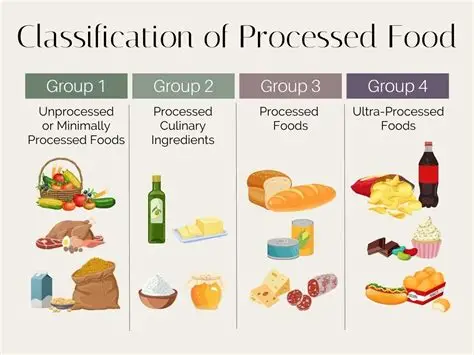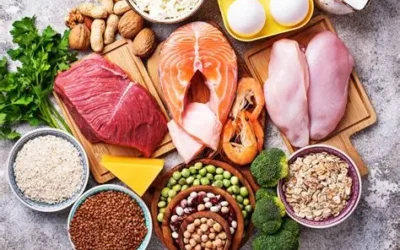Good vrs Bad Ultra-Processed Foods: How to Tell Them Apart
Is every processed food bad for you, or could some actually boost your health while saving time and money?
nanadwumor

-
Not all processed foods are harmful
-
Some provide fiber, protein, vitamins
-
Healthier options include bread, beans, plant milks
-
Balance and label-checking are key
RECOMMENDED ARTICLES
The Good and Bad Sides of Using Vaseline on Your Face
Vaseline helps seal in hydration and offers several skin benefits for the face. Still, a few factors should be weighed before using it. Hydration & protection: Locks in moisture, soothes...
Is Eating Too Much Protein Dangerous to Your Health?
How much protein you need depends on things like your weight, age, fitness goals, activity level, and overall health. Increase protein? Consult a dietitian Ensure diet is balanced Plan tailored...
Top 5 Common Misconceptions About Antidepressants
Antidepressants aren’t a quick fix, but understanding the truth about them can change how we see treatment and recovery. Antidepressants are misunderstood but useful in managing depression...
Many packaged foods are often seen as harmful, yet they are not all the same.
Guidance from the American Heart Association (AHA), released on August 8 in Circulation, questions the belief that every heavily processed item damages health. The statement explains that although many products are tied to problems like obesity, stroke, diabetes, and other conditions, a few may still provide useful nutrition and be part of a balanced eating plan.
These products usually contain large amounts of salt, sugar, and unhealthy fats, which can raise the risk of inflammation, heart issues, and weight gain.
Even so, the AHA highlights that certain methods of preparation can be helpful. Processing can make food safer, extend freshness, reduce toxins, keep flavor and nutrients intact, lower prices, and cut down waste.
So, while unhealthy snacks remain risky, the report notes that some processed items could be acceptable if eaten sparingly.
Foods that go through factory methods can still be useful if they keep nutrients like fiber, protein, vitamins, and minerals while staying low in sugar, salt, and harmful fats, explained Nichola Ludlam-Raine, dietitian and author of How Not To Eat Ultra-Processed.
Better options in this group include:
-
whole grain breads
-
fiber-rich cereals
-
some dairy products
-
fortified plant-based milks
By contrast, items with little nutrition but loaded with sugar, saturated fats, salt, or many additives fall into the less healthy category, she noted. The main difference comes from what’s inside and the nutrient balance, not just the way food is prepared.
Samantha Peterson, MS, RDN, who runs Simply Wellness, shared a similar view. She pointed out that some of the most harmful choices are:
-
sugary drinks
-
refined snacks
-
instant noodles
-
processed meats
According to her, these foods often carry quick-digesting sugars, refined starches, unhealthy oils, sodium, and additives — a mix that can trigger blood sugar spikes, gut issues, inflammation, and raise risks of diabetes, heart disease, and certain cancers.
Long-term intake of low-quality processed foods may also lead to obesity, high blood pressure, poor cholesterol, insulin resistance, disrupted gut health, and higher chances of chronic illness, she added.
2️⃣What should you look for on Nutrition labels?


Some packaged foods offer little benefit, while others supply key nutrients and make life easier for people with busy schedules.
Specialists advise checking nutrition facts and reading ingredient lists closely.
Nichola Ludlam-Raine suggests looking for:
-
breads or cereals with at least 3g fiber per serving
-
yogurts containing 5–10g protein
-
options with little or no added sugar
She also recommends choosing fortified products, especially those with calcium, vitamin D, B12, iron, and iodine, as they can fill nutrient gaps. A short, familiar ingredient list is usually a positive sign, she added.
Samantha Peterson echoed this, noting it’s best when the first ingredients listed are whole foods such as oats, beans, milk, or salmon.
3️⃣ Better-for-you processed food choices
Having clear examples makes healthy choices easier. According to Nichola Ludlam-Raine, better processed options include:
-
Fortified whole grain cereals → rich in fiber, iron, and B vitamins, but best when low in added sugar.
-
Plant-based milks → fortified soy or almond milk (without carrageenan) often provide calcium and iodine, especially useful for people who avoid dairy.
-
Canned beans and pulses → though technically processed, they are natural sources of plant protein and fiber. Rinsing helps lower sodium.
-
Whole grain bread → when low in salt and sugar, it delivers fiber and complex carbs for lasting energy.
-
Greek or plain yogurt with live cultures → supports gut health and strengthens bones.
She noted that these foods supply important nutrients while also offering convenience, which supports long-term well-being.
Processed options can save time, cut costs, and still supply valuable nutrients, which is helpful for people managing busy schedules or tight budgets.
Examples like canned beans, fortified plant milks, and whole grain breads give fiber, protein, and vitamins with very little preparation.
Samantha Peterson explained that processing itself isn’t the problem. Methods such as freezing, fortifying, or canning can protect nutrients and support overall health.
Both specialists emphasized balance. Simple swaps — like choosing whole grain bread over white or sparkling water instead of sugary drinks — can improve diet quality. Mixing fresh foods with frozen and smarter packaged options also works well.
Nichola Ludlam-Raine suggests following an 80:20 approach: focus 80% on whole foods while allowing 20% for better-quality processed items. Less healthy products should be occasional rather than everyday choices. Tracking eating habits with a food diary can also highlight small but useful adjustments.
By including healthier processed foods in moderation, you can enjoy convenience without putting long-term health at risk.
Join Our Telegram Group
Join Our WhatSapp Group
You May Also Like…
The Good and Bad Sides of Using Vaseline on Your Face
Vaseline helps seal in hydration and offers several skin benefits for the face. Still, a few...
Is Eating Too Much Protein Dangerous to Your Health?
How much protein you need depends on things like your weight, age, fitness goals, activity level,...
Top 5 Common Misconceptions About Antidepressants
Antidepressants aren’t a quick fix, but understanding the truth about them can change how we see...




0 Comments